|
More details... Tags: Organelle, Crosstalk, Cytoskeleton, Messenger RNA, Biological membrane, Cell, Intracellular transport Published on 18-09-2025 |
|
| Inst. Bio. Paris Seine 7-9 quai Saint Bernard, 75005 Paris |



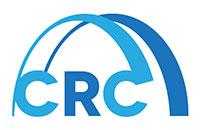






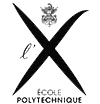





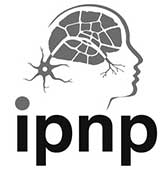

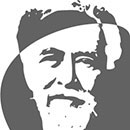

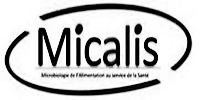






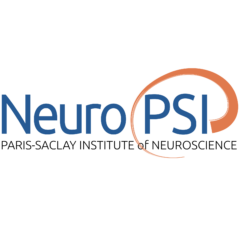






To display seminars of one specific institute, first press 'None' and then the institute of interest.
-
-
Invite par l’equipe Courtier, Nicolas Rode, (Centre de Biologie pour la Gestion des Populations, INRAE, Montpellier) va presenter un seminaire de l’Institut Jacques Monod sur le theme : Investigating microbiota-induced plastic tracking of seasonal host fruits in the invasive pest, Drosophila suzukii Resume : Elucidating the genetic and plastic mechanisms by which insect populations can track seasonal variation in their host plants is a long-standing central goal of evolutionary ecology and has major applied implications in agriculture. By sampling natural populations of Drosophila suzukii on different fruits and doing reciprocal transplant experiments, we found that both oviposition preference and offspring performance were higher on original fruits from which populations originated than on alternative fruits. We are currently investigating the role of a flexible and fruit-specific microbiota in driving this pattern. I will present recent data showing that (1) the fungal communities of D. suzukii are more strongly structured among different host fruits than bacterial communities, (2) differences in fungal communities among fruits are maintained over time in the laboratory whereas bacterial communities change over time due to different life stages of D. suzukii preferentially selecting for some bacterial taxa and that (3) different fungal and bacterial communities induce strong plastic responses in both oviposition preference and offspring performance across host fruits. These results help us better understand how the gut microbiota allow D. suzukii to track seasonal changes in host fruits.
More details...
Tags: Microbiomes, Bacteriology, Microbiology, Environmental microbiology, Drosophila suzukii, Drosophila, Microbiota, Human microbiome, Gut microbiota
Published on 18-09-2025


Institut Jacques Monod
Institut Jacques Monod Salle Francois Jacob, 15 rue Helene Brion, Paris, France -
Vendredi 17 octobre, Bruno Lemaitre (Global Health Institute, School of Life Science, Ecole Polytechnique Federale de Lausanne (EPFL), Lausanne, Switzerland) presentera une conference de l’Institut Jacques Monod : A retrospective analysis of 400 publications reveals patterns of irreproducibility across an entire life sciences research field Resume : Research on Drosophila immunity has not only transformed our understanding of innate immunity but has also influenced studies on insect pests and disease vectors. Yet, as in many rapidly developing fields, some published findings have proven irreproducible. While certain results have been explicitly contradicted, many others remain untested, often due to limited follow-up or a lack of incentive to publish negative findings. To address this gap, we conducted a systematic conceptual reproducibility project evaluating claims from articles on Drosophila immunity published before 2011. From 400 papers, we extracted key claims and assessed their verifiability by cross-referencing the literature and, in selected cases, experimentally testing unchallenged? claims without prior replication (https://ReproSci.epfl.ch/. Our approach provides, uniquely, a field-wide assessment-14 years later-of the replicability of nearly all publications within an experimental life science community. We found that high-impact journals and top-ranked institutions are more likely to publish challenged claims. In line with the reproducibility crisis narrative, the rates of both challenged and unchallenged claims increased over time, especially as the field gained popularity. We characterized the uneven distribution of irreproducibility among first and last authors. Group leaders, who had prior experience as first authors in another Drosophila immunity team, had lower irreproducibility rates, underscoring the importance of early-career training. Finally, authors with a more exploratory, short-term engagement with the field exhibited slightly higher rates of challenged claims and a markedly higher proportion of unchallenged ones. We also did interviews with principal investigators to further shed light on how researchers navigate issues of reproducibility in practice. This systematic, field-wide retrospective study offers meaningful insights into the ongoing discussion on reproducibility in experimental life sciences.
More details...
Tags: Scientific method, Metascience, Statistical reliability, Criticism of science, Replication crisis, Bruno Lemaitre, Drosophila, Reproducibility
Published on 18-09-2025


Institut Jacques Monod
Institut Jacques Monod Amphitheatre Buffon, 15 rue Helene Brion, Paris, France -
Invited by: Paris Postdoc Seminar (PPS)
More details...
Tags: Behavior, Hippocampus, Limbic system, Dorso-ventral, Sleep
Published on 17-09-2025


IBENS
salle Favard, IBENS 46 rue d'Ulm 75005 Paris -
Invited by: Drs A. Pierani G Huberfield
Hippocampal circuits are instrumental for memory function. They are specifically affected in conditions such as temporal lobe epilepsy and Alzheimer's disease. Here, we discuss mechanisms and functional markers of normal and pathological hippocampal circuit operations using large scale recordings and advanced computational analysis. We show how cell type specific subcircuits play roles in hippocampal memory representations and how their distortion in epilepsy may lead to the associated cognitive comorbidities.
More details...
Tags: Memory, Neuronal circuits, Epilepsy
Published on 17-09-2025


Institut de Psychiatrie et Neurosciences de Paris
Room D Levy, Institut de Psychiatrie et Neurosciences de Paris (IPNP) UMR 1266 INSERM - Universite Paris Cite, 102-108 Rue de la Sante - 75014 Paris -
Invited by: Dr A. Pierani
There is now long-lasting evidence that the construction and maturation of cortical networks during development is activity dependent. In the developing hippocampus, such activity consists of intermittent busts of activity called early sharp waves (eSPWs) that are spontaneously triggered in the periphery. With age, eSPWs leave place to a continuous activity regimen dominated by rhythmic activity. Pioneering ex-vivo experiments suggest that GABAergic interneurons control and orchestrate immature network activity. In-vivo, however, this role is less clear. While there is evidence for the recruitment of GABAergic neurons during eSPWs, the precise timing of their activation in unknown. Furthermore, there are still uncertainties on how GABAergic cells impact the excitability of the immature hippocampal networks in-vivo. To address these issues, we developed a combined electrophysiological and optogenetic method allowing us to identify and manipulate GABAergic neuron activity in neonatal mice. Our results show that GABAergic neurons were more active than the rest of the recorded population and participated in more eSPWs. We also found evidence of both spontaneous and GABA-driven inhibition as early as post-natal day (P) 3. This inhibitory effect increased with age and reached plateau at P9-P10. Putative excitatory effect of GABAergic firing was negligible. We propose that rather than being caused by a switch in the polarity of GABA action, such rise of inhibition is due to the rapid growth of peri-somatic GABAergic inputs to pyramidal cells. The resulting development of feed-back inhibition within hippocampal networks would allow for the apparition of continuous network dynamics, ultimately supporting the emergence of cognitive processes.
More details...
Tags: development, hippocampus, GABAergic, electrophysiological and optogenetic
Published on 17-09-2025


Institut de Psychiatrie et Neurosciences de Paris
Room D Levy, Institut de Psychiatrie et Neurosciences de Paris (IPNP) UMR 1266 INSERM - Universite Paris Cite, 102-108 Rue de la Sante - 75014 Paris -
Invited by: Dr A. Pierani
The developing hippocampus undergoes profound structural and functional changes that are critical for the establishment of functional networks. Disruptions in these processes are implicated in a range of neurological and psychiatric disorders. Particular attention is given to CajalRetzius cells, an early-born neuronal population with strong synaptic integration into the hippocampus, whose dysfunction can be linked to impaired memory and increased innate anxiety. The perspective then shifts to the maturation of synaptic networks in the dentate gyrus, with a focus on granule cells and their perforant path synapses as a key model of connectivity development. A multimodal approach combining 3D electron microscopy, patch-clamp electrophysiology, and computational simulations is used to uncover cellular and synaptic principles that shape hippocampal development. During this period, synapses undergo profound structural changes that may contribute to synaptic plasticity and enable memory formation within a functional, mature hippocampal neural circuit.
More details...
Tags: Hippocampus, Neural Networks, Synapse, Cajal-Retzius cells, Granule Cells
Published on 17-09-2025


Institut de Psychiatrie et Neurosciences de Paris
Room D Levy, Institut de Psychiatrie et Neurosciences de Paris (IPNP) UMR 1266 INSERM - Universite Paris Cite, 102-108 Rue de la Sante - 75014 Paris -
Invited by: Yasmine Belkaid
Annual Retreat of Cancer Grand Challenges Team PROSPECT Thursday, October 2 Friday, October 3 If you would like to attend these two sessions, please email Emilie Gehin at emilie.gehin@pasteur.fr before Friday, September 26, including ...
More details...
Tags: Cancer, Colorectal cancer
Published on 17-09-2025


Institut Pasteur
Batiment: Monod Salle: Agnes Ullmann amphitheater -
Morphogenesis is the process in which cells, tissues, organs and embryos acquire orderedness, patterns, shapes and higher order organizations. Studies in the last decades began to reveal that morphogenetic processes depend not only on deterministic genetic programs, but also mechanical/physical mechanisms that show hallmarks of stochasticity and self-organization. The involvement of physical mechanisms raises intriguing questions as to how they might influence the evolutionary dynamics of morphogenesis, in conjunction with the well-established evolutionary pathways of descent with genetic modifications. Using early embryonic morphogenesis in the Drosophila as a model system, recent work in my lab shows that: 1) the build-up of compressive stresses during axial elongation and tissue expansion is averted by divergent strategies that act as ?mechanical sink' to pre-empt tissue ?tectonic' collision; 2) tensile stresses generated during invagination and convergent extension require a cell-intrinsic compliance program to prevent tissue rupture; and 3) efficient yolk compaction via colloidal forces safeguards cell formation and tissue invagination to prevent mechanical instabilities that could arise due to physical impediment of the yolk compartment. These data suggests that physical factors and mechanics might be more than a contributor of morphogenesis, but a facilitator of evolutionary transition and innovation
More details...
Tags: Developmental biology, Cellular processes, Morphology, Invagination, Morphogenesis
Published on 16-09-2025


Institut Curie
Centre de recherche - Paris - Amphitheatre Helene Martel-Massignac (BDD) -
-
More details...
Tags: Analysis, Decision-making, Neuropsychological assessment, Prediction, Cognition
Published on 16-09-2025


NeuroPSI
Salle de conference Albe-Fessard -
Invited by: PERRON Muriel
More details...
Tags: Computational neuroscience, Artificial intelligence, Insects in culture, Artificial general intelligence, Hypothetical technology, Flea
Published on 16-09-2025


NeuroPSI
Salle de conference Albe-Fessard -
Invited by: Paola Arimondo
More details...
Tags: Screening, Drug discovery, Society for Biomolecular Sciences, Draft:Vipergen
Published on 16-09-2025


Institut Pasteur
Batiment Duclaux, salle Duclaux amphitheater, -
Melanoma is known for its heterogeneity and plasticity, yet the origins and extent of its cell state diversity are unclear. It remains uncertain whether melanoma growth, metastasis, and therapy resistance arise from overlapping or distinct subpopulations. By utilizing mouse genetics, lineage tracing, and single-cell spatial transcriptomics, we have mapped the diversity and trajectories of cancer cell states within the melanoma ecosystem. Our findings indicate that distinct pools of melanoma cells support growth, metastasis, and drug resistance, and that these capabilities can be dynamically acquired through specific extrinsic niche signals. To explore therapeutic strategies that disrupt this reprogramming, comprehensive methods for monitoring intratumor heterogeneity (ITH) and cell state dynamics at the single-cell level are essential. Although single-cell transcriptomics is the standard, it has limitations such as high costs and long analysis times. We discovered that distinct morphological features characterize canonical melanoma transcriptional states, leading to the development of SHAPE, a simple, cost-effective FACS-based method for quantifying morphometric parameters. Leveraging SHAPE, we analyzed escape trajectories from therapies and identified a drug combination that effectively targets melanoma cells regardless of genetic background, enhancing sensitivity to standard treatments in preclinical models. This approach is also applicable to other tumor types. Overall, these findings create a geometry-based framework for monitoring ITH and propose a universal combination strategy that addresses genetic diversity and non-genetic adaptive resistance. Few Refs: Karras P, Bordeu I, Pozniak J, Pedri D, Landeloos E, Van Raemdonck N, et al, Marine JC. A cellular hierarchy in melanoma uncouples growth and metastasis. Nature, 2022 Oct; 610(7930): 190-198. Karras P, Black JRM, McGranahan N, Marine JC. Decoding the interplay between genetic and non-genetic drivers of metastasis. Nature. 2024 May;629(8012):543-554. Pozniak J, Pedri D, Landeloos E, Van Herck Y, Antoranz A, Karras P, et al, Marine JC. A TCF4/BRD4-dependent regulatory network confers cross-resistance to targeted and immune checkpoint therapy in melanoma. Cell 2024, 187, 166-183. Pozniak J, Roda N, Landeloos E, Antoranz A, Van Herck Y, De Visscher A, et al, Marine JC. Cytotoxic NK Cells Impede Response to Checkpoint Immunotherapy in Melanoma with an Immune-Excluded Phenotype. Cancer Discov. 2025 Jun 18:OF1-OF16.
More details...
Tags: Cancer pathology, Skin cancer, Carcinogenesis, Immune system, Cancer immunotherapy, Metastasis, Melanoma, Checkpoint inhibitor, Cancer, Tumour heterogeneity
Published on 13-09-2025


Institut Curie
Centre de recherche - Paris - Amphitheatre Constant-Burg - 12 rue Lhomond, Paris 5e -
Brown algae (seaweeds) are remarkable organisms that independently evolved complex multicellularity, making them an invaluable window into how development can arise in very different evolutionary contexts. In this talk, I will explore the biology of these seaweeds, from themolecular mechanisms governing their mating rituals, including sex determination, pheromone signaling, cell-cell recognition and gamete fusion, andthe surprising ways in which viruses shape their life cycles. I will highlight our recent discovery of a giant virus that integrates into the genome of the model alga Ectocarpus, reactivating during reproduction and influencing both host development and evolution. Together, these stories reveal brown algae as a powerful system for uncovering fundamental principles of multicellularity, reproduction, and host-virus interactions across the tree of life.
More details...
Tags: Evolutionary biology, Ectocarpales, Ectocarpus, Biological oceanography, Multicellular organism, Virus, Algae, Brown algae, Sex, Mating
Published on 13-09-2025


Institut Curie
Centre de recherche - Paris - Amphitheatre Marie Curie -
More details...
Tags: Artificial intelligence, Cognitive psychology, Educational psychology, Neuropsychological assessment, Problem solving, Reasoning, Amniote
Published on 13-09-2025


NeuroPSI
Salle de conference Albe-Fessard -
More details...
Tags: Sensory systems, Animal hair, Mammal anatomy, Whiskers, Sense, Sensory, Tactile sensor, Neuroplasticity, Barrel cortex
Published on 13-09-2025


NeuroPSI
Salle de conference Albe-Fessard -
Invited by: Imge Ozugergin
Our next Qbio lunch/minisymposium, organized by Imge Ozugergin, will take place on Wednesday 08/10/25, Monod 7th floor (12:00 to 14:30). This time, we'll lure around the notion of timescale in biology trying to address ...
More details...
Tags: Metronome, Music education, Pendulums, Timekeeping
Published on 13-09-2025


Institut Pasteur
Batiment: Monod/66 Salle: 03, 7th floor -
Invited by: Denis Duboule
When we look at the history of life at a grand scale, from the earliest single celled organism to complex animals alive today, we see a past filled with great revolutions. Major transformations pervade this history, involving new features, new developmental processes, new ways of living, and new ecological interactions. In our own lineage, over the past 500 million years some fish evolved to live on land, reptiles evolved to fly, and primates evolved the ability to talk, walk, and think. For each of these major transitions we recognize features that allowed them to happen. The standard view is that these innovations were enablers for a major revolution: for example, feathers arose for flight, lungs, for life on land, etc. But this view couldn&'t be farther from the truth. Lungs evolved in fish well before they ever took steps on land, feathers arose in dinosaurs before they could fly, and so on. The features that play a role in great evolutionary changes arise by repurposing existing features for new functions. This view of evolutionary tinkering, first pioneered by Francois Jacob in the 1970's, carries profound implications for modern molecular and paleontological evolutionary biology.
More details...
Tags: Feather, Evolution, Fossil, Animal, Evolutionary biology
Published on 12-09-2025


College de France
au College de France - Amphitheatre Guillaume Bude 11 place Marcelin Berthelot - 75005 Paris -
Invited by: Denis Duboule
Teeth and bones are fundamental features of vertebrate organisms. The earliest vertebrates date from fossils that are over 500 million years old and existed at the time of the Cambrian Explosion, a great burst of innovation in the evolutionary history. The first creatures with tissues similar to our teeth and bones arenin the bony exoskeletons of our jawless fish ancestors. Inside this exoskeletal armor are small structures that are distinctly toothlike. Detailed comparisons of these features among living and fossil vertebrates and invertebrates reveal that the earliest teeth likely had a sensory function in the external tissues of these fish. Assessing diverse fossil fish reveals that many distinct features of our bones and teeth, such as the capacity to remodel, originally came about in jawless fish. : The Evolutionary Origins of Bones and Teeth
More details...
Tags: Animal anatomy, Paraphyletic groups, Ichthyology, Infraphyla, Evolution of fish, Vertebrate, Tooth, Jaw, Skeleton, Agnatha, Fossil, Fish
Published on 12-09-2025


College de France
au College de France - Amphitheatre Guillaume Bude 11 place Marcelin Berthelot - 75005 Paris -
The ability to walk is fundamental to human lives. Like all our biological features walking has a complex and deep history. It is most commonly thought that walking arose as fish made the evolutionary transition to land, shifting from an aquatic environment to a terrestrial one. In this view, the transition out of water meant that animals now had to evolve new mechanisms to deal with gravitational loads. As a consequence, they developed more mobile joints, arm and leg bones with robust connections for expanded locomotory muscles, and other structures to allow them to move about. Surprising, this very intuitive view is not supported either by comparative anatomy or the fossil record. The closest fish relatives to terrestrial vertebrates were capable of walking with four appendages, a fact seen in the structure of the bones and joints in their fins. Moreover, walking either on four appendages or two is commonly seen in aquatic fish ranging from sharks, lobe fin fishes, and diverse ray finned fishes. Indeed, many of these fish use alternating gaits and appendage motions in aquatic settings that are similar to terrestrial tetrapods. This observation leaves open the question of why fish walk in water instead of swimming. To answer these questions scientists have developed underwater treadmills, experiments training fish to walk, and robots that simulate walking behaviors. One major factor in the origin of fish walking, hence our own, is energetics: at slow speeds, and in certain environmental conditions is it energetically more efficient to walk than swim.
More details...
Tags: Ichthyology, Zoology, Terrestrial locomotion, Animal anatomy, Fin, Rocketry, Tetrapod, Animal locomotion, Fish anatomy, Vertebrate, Walking, Evolution of fish
Published on 12-09-2025


College de France
au College de France - Amphitheatre Guillaume Bude 11 place Marcelin Berthelot - 75005 Paris -
Invited by: Denis Duboule
This lecture will explore the deep history of our bodies, one that extends billions of years. As we uncover new fossils, understand the patterns and mechanisms that form diverse animal bodies, and compare the anatomy of organ systems of creatures alive today, we find that every structure in our bodies contains artifacts of our branch of the tree of life. Our limbs are based on the pattern of bones first seen in ancient fish as is the patterns of nerves, muscles, and organs in our circulatory, excretory, and nervous systems. The profound connections we share with the rest of life of our planet also inform biomedical studies. Analyses of fish play important roles in understanding and treating diverse human diseases.
More details...
Tags: Ichthyology, Animal anatomy, Anatomical terminology, Anatomy, Morphology, Fish, Neil Shubin, Fin
Published on 12-09-2025


College de France
au College de France - Amphitheatre Guillaume Bude 11 place Marcelin Berthelot - 75005 Paris -
From a scientific concept to an innovative cell &gene therapy product
More details...
Tags: Amigorena, Zelia, Claude Vivier, Menegatti, Eyquem, Puisieux, Vivier, Paoletti, Tovar
Published on 12-09-2025


Institut Curie -
mRNA vaccines proved to be very successful during the COVID-19 pandemic. The most advanced platform uses nucleoside-modified mRNA formulated in lipid nanoparticles (LNPs). Both the mRNA and LNP design and chemistry contribute to the immunostimulatory properties of mRNA vaccines. Dr. Pardi s seminar will discuss how the composition of LNPs can be tailored to induce more cellular- or humoral-focused immune responses based on the vaccine application.
More details...
Tags: RNA, MRNA vaccine, Lipid-based nanoparticle, Nucleoside-modified messenger RNA, Norbert Pardi, Vaccine, Messenger RNA, RNA therapeutics, Self-amplifying RNA
Published on 12-09-2025


Institut Curie
Centre de recherche - Paris - Amphitheatre Constant-Burg - 12 rue Lhomond, Paris 5e -
In clinical practice, 18-FDG PET/CT scans are widely used to detect tumoral or inflammatory pathologies through visual assessment and semi-quantitative metrics based on SUVs. These quantification methods are quick to obtain, but they require clinicians to manually draw regions of interest. Moreover, they focus only on the most intense voxels, which leads to less accurate, less reproducible, and less robust results. To address this, we developed a methodology for the automatic detection and quantification of metabolic abnormalities in 18-FDG PET/CT images. Specifically, we constructed an organ-by-organ normative atlas of 18-FDG uptake from a representative dataset of healthy subjects. This atlas enables the automatic identification of abnormal metabolic activity. We validated this approach in patients with lung cancer undergoing immunotherapy. While immunotherapy has shown promising results across various cancers, including lung cancer, it is also associated with immune-related adverse events, emphasizing the need for their early detection. In this context, the normative atlas was applied to automatically identify both tumoral and inflammatory metabolic abnormalities in these patients.
More details...
Tags: Neuroimaging, Medical physics, Medicinal radiochemistry, PETCT, Standardized uptake value, Positron emission tomography, Fluorodeoxyglucose
Published on 12-09-2025


Institut Curie
Centre de recherche - Orsay - Webinar -
Grégory Verdeil is invited by Laurie Choux.
More details...
Published on 11-09-2025


Institut Cochin
Salle Rosalind Franklin -
TBA
More details...
Tags: Lydia, Draft:The walk (2015 tv series(, The New Adventures of Kimba The White Lion
Published on 11-09-2025


Laboratoire Jean Perrin
Laboratoire Jean Perrin - Campus Jussieu - T 22-32- 4e et. - P407 -
TBA
More details...
Published on 11-09-2025


Laboratoire Jean Perrin
Laboratoire Jean Perrin - Campus Jussieu - T 22-32- 4e et. - P407 -
TBA
More details...
Tags: Jean-Charles, Draft:The walk (2015 tv series(, Draft:
Published on 10-09-2025


Laboratoire Jean Perrin
Laboratoire Jean Perrin - Campus Jussieu - T 22-32- 4e et. - P407 -
Invited by: Maria Teresa Teixeira
The DNA Damage Response (DDR) is a complex signaling cascade elicited in the cell by damaged DNA, orchestrated by apical protein kinases, assisted by sensors and effectors. The two master kinases upstream of the DDR, ATR and ATM, are thought to mainly respond to single-stranded DNA and double strand breaks, respectively. However, non-canonical types of DDR have been reported (compact chromatin, mechanical or oxidative stress, among others), meaning that there exist stimuli equally capable of launching the DDR, yet in the absence of actual DNA damage. Overall, it remains poorly understood which is the actual signal, or signals, engaging these kinases. Building on the knowledge that ATM and ATR belong to the phosphatidyl-inositol-3-phosphate (PI3P)-kinase-related kinase family, we interrogated in the past if ATM and / or ATR can bind to, or be influenced by, phosphoinositides or other types of lipids. Of note, ATR has been found, in at least four previous studies, to sense the physico-chemical properties of phospholipids. We have discovered that ATM binds phosphatidyl-inositol-4-phosphate (PI4P) at the Trans Golgi, which allows it to remain anchored in an inactive (and non-phosphorylated) status. Activated ATM working in the nucleus can be titrated by the Golgi if PI4P levels at this location increase. Reciprocally, if PI4P levels decrease at the Golgi, ATM becomes more available to readily respond to DNA lesions inside the nucleus. Concerning ATR, we found thatATR combines its ability to sense DNA damage and phospholipid profiles to finetune the response to DNA lesions in a manner dependent on metabolic cues. We are confronting at present an even more surprising (yet simple) rule: DNA damage can be felt by membranes without the intermediate action of a DDR protein cascade. Inspired by compelling examples occurring in the mitochondria during the quality control of mitochondrial DNA, we are defining now general principles of this DNA-membrane signaling axis in the nucleus. Overall, I will discuss how the lipid profile of the nuclear envelope and other cellular membranes, which evolve in time and space, exerts a control over the response to DNA damage.
More details...
Published on 10-09-2025


IBPC
Conference room IBPC, 13 rue Pierre et Marie Curie 75005 Paris -
Invited by: Maria Teresa Teixeira
More details...
Published on 10-09-2025


IBPC
Conference room IBPC, 13 rue Pierre et Marie Curie 75005 Paris, Ile de France -
Active systems, such as living cells, are traditionally modelled via self-propelled particles driven by internal forces. It is however often assumed that these internal forces do not depend on the environment which is questionable from a biological perspective. Here we use the framework of Generalized Langevin Equations (GLE) to go beyond this paradigm by incorporating internal state dynamics and environmental sensing into active particle models. We show that when the self-propulsion of a particle depends on internal variables themselves depending on the environment, qualitatively new behaviours emerge. These include memory-induced responses, controllable localization in complex landscapes, and suppression of motility-induced phase separation or enhanced jamming transitions. Our results demonstrate how minimal information processing capabilities, intrinsic to nonequilibrium systems like living cells, can profoundly influence both individual and collective behaviours. This framework bridges cell-scale activity and large-scale intelligent motion of active agents and offers insights relevant to systems ranging from synthetic colloids to biological collectives or robotic swarms.
More details...
Tags: Zoology, Complex systems theory, Multi-agent systems, Biophysics, Ethology, Self-propelled particles, Swarm behaviour, Jamming, Colloid
Published on 10-09-2025


Laboratoire Jean Perrin
Laboratoire Jean Perrin - Campus Jussieu - T 22-32- 4e et. - P407 -
Invited by: SHULZ Daniel
More details...
Tags: Sensory systems, Cerebral cortex, Sensory cortex, Somatosensory system, Proprioception, Somatosensory disorder, Tactile hallucination
Published on 09-09-2025


NeuroPSI
Salle de conference Albe-Fessard -
Invited by: SHULZ Daniel
More details...
Tags: Neuroplasticity, Dendrite, Apical dendrite, Neuroscience, Neural circuitry
Published on 09-09-2025


NeuroPSI
Salle de conference Albe-Fessard -
Invited by: SHULZ Daniel
More details...
Tags: Cerebral cortex, Parietal lobe, Cerebrum, Posterior parietal cortex, Evoked potentials, Parietal, Electroencephalography, Posterior cortex, Parietal-temporal-occipital
Published on 09-09-2025


NeuroPSI
Salle de conference Albe-Fessard -
CpG dinucleotides are hotspots for mutagenesis by spontaneous deamination of 5-methylcytosine (5mC) into thymine, resulting in T:G mismatches that can lead to C>T transitions. These mutations are not only a hallmark of aging and cancer but also a major force shaping the evolution of vertebrate genomes. We have previously uncovered MBD4 as the primary base excision repair (BER) glycosylase responsible for 5mC deamination repair in both CpG and non-CpG contexts, with a striking preference for guarding active chromatin and early-replicating DNA. In this study, we employ a targeted base-editing system—comprising an APOBEC1 deaminase fused to a catalytically dead Cas9—to induce precise and strand-specific cytosine deamination and track its repair. This approach allows us to systematically investigate the cellular components required for efficient 5mC deamination repair in human cells. Our data reveal that MBD4 cooperates with the mismatch repair (MMR) pathway outside of S-phase, implicating non-canonical MMR in the repair of this form of DNA damage. Using AI-based structural predictions alongside biochemical validation, we identify a previously unrecognized complex including MBD4 and MMR components, positioning them as key players in a coordinated repair response. Finally, we analyze thousands of tumor whole-genomes to show that MMR deficiency leads to CpG hypermutagenesis lacking replication strand asymmetry, further supporting a role for replication-independent MMR activity in 5mC deamination repair. Altogether, we uncover a novel function of non-canonical MMR that underscores its interplay with BER in safeguarding genomic integrity in mammalian cells. Paris postdoc seminar series
More details...
Tags: DNA, Mutation, Molecular genetics, Senescence, Base excision repair, CpG site, Deamination, 5-Methylcytosine, MBD4, DNA repair, DNA damage, Transition
Published on 06-09-2025


Institut Cochin
Salle Rosalind Franklin -
The opportunistic human fungal pathogen Candida albicans displays a high degree of morphological plasticity, with the ability to switch between at least 7 different forms, depending on its environment. Of these, the hyphal form is able to penetrate host mucosal surfaces and therefore plays an important role in the dissemination and development of disease. Under certain conditions, including physical confinement and nutrient restriction, hyphae grow helically- a little-studied morphology which may afford the cell both increased virulence and drug resistance. This study investigates the molecular basis behind helical growth via both a large-scale screen and targeted analysis, through which we have uncovered the cooperation of diverse cellular processes, including cell wall and plasma membrane dynamics, whole-cell polarisation and calcium homeostasis. Furthermore, we have used a colon-on-chip model, which replicates the peristaltic stretch found in the human gut, to trigger 3D epithelial architecture, allowing the imaging and study of C. albicans hyphal invasion in situ. We have observed helical hyphal growth through gut epithelial layers, causing increased tissue damage in comparison with non-helical strains. This indicates for the first time that this morphology likely plays a role in tissue invasion. This model also sheds light on the involvement of gut peristalsis with prevention of systemic fungal infection. This work details a collaboration between diverse processes across the cell to produce a helical hypha morphology, which together aid human gut epithelial invasion. Paris postdoc seminar series
More details...
Tags: Yeasts, Gut flora, Pathogenic microbes, Candida albicans, Candida, Epithelium, Hypha, Gastrointestinal tract, Hwp1, Candidalysin
Published on 06-09-2025


Institut Cochin
Salle Rosalind Franklin -
Invited by: Michaela Muller-Trutwin
As part of the annual meetings of the Coordinated Action on Host-Virus Interactions: Basic and Translational HIV Research, the TheGeVec Group is hosting its first symposium on November 28th 2025: Shaping the Future of ...
More details...
Tags: Gene delivery, Biotechnology, Molecular biology, Applied genetics, Bioethics, Gene therapy, Pasteur Institute, Therapy
Published on 05-09-2025


Institut Pasteur
Batiment: Centre Francois Jacob Salle: Auditorium Francois Jacob -
Invited by: Philippe Sansonetti
Human milk lives at the very intersection of maternal and infant health. Yet, it remains poorly understood and highly understudied. The presentation outlines the many benefits of breastfeeding and human milk for both the ...
More details...
Tags: Breastfeeding, Breast milk, Milk, Oligosaccharide, Infant
Published on 05-09-2025


Institut Pasteur
Batiment: Duclaux Building Salle: Duclaux Amphitheater -
Invited by: Darragh Duffy
24th OCTOBER 2025 | INSTITUT PASTEUR | FRANCE We are happy to announce the 2025 yearly meeting of the Milieu Interieur LabEx. Join us on the 24th of October at 9h Amphitheater Duclaux at ...
More details...
Tags: Corruption in France, Organized crime in France, Courtray Design Biennale Interieur, Pasteur Institute
Published on 05-09-2025


Institut Pasteur
Batiment: Duclaux Salle: Amphitheatre Duclaux -
Invited by: Anne-Caroline Deletoille
The Data Management Core Facility, the Hearing Institute Data Acquisition and Signal Processing Facility, and the Scientific Information Resources Center (CeRIS) invite you to an event designed for anyone who would like to learn ...
More details...
Tags: Hearing, Otology, Auditory system, Audiology, Acoustics, Neuroscience, Computational audiology
Published on 05-09-2025


Institut Pasteur
Batiment: Ágnes Ullmann Amphitheater (morning) - Fernbach building (afternoon) -
Invited by: Darragh Duffy
23rd of October 2025 at Institut Pasteur | Paris The LabEx Milieu Interieur is sponsoring the EFIS Sex Differences group conference. Keynote Speakers: Resgitration ans abstract submission is now closed. Agenda - EFIS Sex ...
More details...
Tags: Avionics, Display technology, Electronic flight instrument system, Glass cockpit, Louis Pasteur, Pasteur Institute
Published on 05-09-2025


Institut Pasteur
Batiment: Duclaux Salle: Amphitheater -
Invited by: Philippe Sansonetti
Francois Leulier and his team study how protein malnutrition during the critical period of weaning alters the physiology of juveniles. They recently uncover striking sex-specific physiological trade-offs between growth, metabolism and sexual maturation during ...
More details...
Tags: Limbic system, Malnutrition, Motivation, Neuropsychology, Proteinenergy malnutrition, Protein, Nutrition
Published on 05-09-2025


Institut Pasteur
Batiment: Francois Jacob Salle: Auditorium -
Invited by: Jerome Gros
This conference brings together scientists studying gastrulation, the process where pluripotent stem cells internalize and differentiate into embryonic germ layers while establishing the embryo’s main axes. It covers fundamental biology topics such as gene ...
More details...
Tags: Developmental biology, Embryology, Gastrulation, Biotechnology, Stem cell, Embryo, Germ layer, Cellular differentiation
Published on 05-09-2025


Institut Pasteur
Batiment CIS, salle , -
Invited by: Jessica Bryant
Join us in celebrating the distinguished career, invaluable mentorship, and scientific legacy of Prof. Artur Scherf. This symposium will celebrate the immense impact of Artur Scherf’s research and activism on the parasitology community through ...
More details...
Tags: Ecology, Parasitology, Disease ecology, Parasitism
Published on 05-09-2025


Institut Pasteur
Batiment CFJ, salle CFJ Auditorium , -
Invited by: Morgane Bomsel - Frederic Bouillaud - Sandrine Bourdoulous - Catherine Postic - Dominique Salmon - Dominique Zeliszewski
More details...
Tags: Long COVID, Post-acute infections
Published on 05-09-2025


Institut Cochin
Amphitheatre Luton de la Faculte de Medecine, 24 rue du Fg St Jacques - 75014 -
Gastrulation is a hallmark event in embryonic development, resulting in germ layer specification and formation of the body axes. While the role of diffusible morphogen signals (e.g. BMP, Wnt, Nodal) in gastrulation is well-established, recent studies increasingly implicate mechanical forces as an additional source of morphogenetic information. Taking advantage of a minimal pluripotent stem cell (PSC)-based model of human gastrulation, we are investigating the interplay between cell fate and mechanics during gastruloid disc self-organization. These are micropatterned PSC colonies, which self-organize into concentric rings of the three germ layers and the extraembryonic amnion upon BM4 stimulation. Taking advantage of their simplified geometry, we established a computational image analysis pipeline to project, segment and automatically extract key morphometric parameters (e.g. cell shape, tissue stress) during gastruloid self-organization. We found that extraembryonic amnion cells, induced at the gastruloid edge, adopt a squamous organization while the differentiated epiblast remains columnar, consistent with their in vivo counterparts. This differential cell shape pattern arises due to gastruloid specification rather than to purely geometrical constrains, as edge cells remain columnar in confined pluripotent gastruloids. Our ongoing work supports that the squamous organization of the amnion is cell-autonomous, since it is observed even colonies homogeneously induced to amnion identity. We are now investigating the mechanical forces driving these shape changes, as well as how this biophysical mechanism is linked to amnion specification. Overall, this multiscale approach is allowing us to quantitatively characterize the mechanical forces arising during cell fate acquisition and gastruloid patterning, opening the door for a mechanistic understanding of the regulation and functional role of mechanical forces in human gastrulation.
More details...
Tags: Embryology, Developmental biology, Gastrulation, Stem cells, Gastruloid, Tissue engineering, Epiblast, Germ layer, Cellular differentiation, Amnion, Morphogenesis
Published on 05-09-2025


Institut Curie
Centre de recherche - Paris - Amphitheatre Helene Martel-Massignac (BDD) -
Le cours est dedie aux connaissances les plus actuelles articulant la biologie du developpement et l etude cellulaire et moleculaire des cancers. Les cretes neurales et les melanomes, depuis leur formation jusqu a leur migration (metastases), ainsi que les cancers pediatriques d'origine embryonnaires tels que les medulloblastomes et neuroblastomes sont pris comme exemples. Le cours beneficie d une approche multidisciplinaire a multiples echelles (embryologie sur des modeles varies, biophysique, biologie cellulaire, transcriptomique, imagerie...). Il aborde egalement des approches therapeutiques. Le cours est ponctue par des tables rondes sur les carrieres dans le milieu academique ou dans l industrie,sur la publication d articles scientifiques ainsi que sur l ethique en experimentation animale.Des sessions posters de doctorants sont egalement organises et des prix pour les meilleurs posters seront decernes par les participants aux cours.
More details...
Published on 04-09-2025


Institut Curie
Centre de recherche - Orsay - Amphitheatre du Batiment 111 -
Invited by: Marianne de Paepe
Viruses that infect bacteria, known as phages, are part of microbial communities and influence the abundance, diversity, and traits of their hosts. In an agriculture-related context, they are commonly considered as potential biocontrol agents, but studying the bases of fundamental phage-bacterial interactions may help us better understand the plant microbiome and its applications. Many factors influence these interactions, and identifying which ones matter most remains a challenge. In our study, we investigated how phages from diseased plants interact with bacteria collected from diseased and healthy plants, as well as from surrounding environments. We expected phages to mainly infect bacteria from similar environments, but instead observed that they often infected bacteria regardless of their source. This suggests that phage activity in this system has few barriers, reflecting the wide ecological distribution of their bacterial hosts. We further investigated how bacteria defend against phages by identifying both defence systems and prophages within their genomes, using this information to explore their contribution to bacterial resistance or sensitivity to phages. Together, our findings offer new insights into how phage-bacterium relationships evolve and function in plant ecosystems.
More details...
Tags: Bacteriophages, Bacteriology, Virology, Bacteriophage, Prophage, Microbiome, Bacteria, Phage ecology, Phage therapy
Published on 03-09-2025


Institut Micalis
Auditorium 442 - Institut Micalis -
More details...
Published on 02-09-2025


Inst. Bio. Paris Seine
7-9 quai Saint Bernard, 75005 Paris -
More details...
Tags: Digital violence, Moral law
Published on 02-09-2025


Inst. Bio. Paris Seine
7-9 quai Saint Bernard, 75005 Paris -
More details...
Published on 02-09-2025


Inst. Bio. Paris Seine
7-9 quai Saint Bernard, 75005 Paris -
Caveolae are plasma membrane invaginations formed by interaction of the membrane protein caveolin-1 with the adaptor protein cavin-1. They have long been thought to be an endocytic portal and also attributed roles in cell signaling, via the highly conserved caveolin scaffolding domain (CSD). However, caveolae are actually stable at the plasma membrane where they function as a membrane buffer, flattening in response to mechanical stress and protecting cells from membrane rupture and death. AI based network analysis (SuperResNET) of single molecule localization microscopy has allowed us to determine the structure of caveolae and non-caveolar caveolin-1 oligomers, or scaffolds, in the plasma membrane. Both caveolae and scaffolds interact with cavin-1 that impacts their shape and organization. Scaffolds released upon caveolae flattening regulate receptor signaling via the CSD and, upon reduced membrane tension, are internalized via CLIC endocytosis to lysosomal vacuoles or reservoirs from which they can recycle to the cell surface. Caveolae flattening and CLIC endocytosis to lysosomal reservoirs define dual and complementary mechanisms by which caveolin-1 contributes to the cell's mechanical response to changes in membrane tension.
More details...
Tags: Membrane biology, Cellular processes, Organelles, Endocytosis, Caveolin, Caveolae, Cell membrane, Super-resolution microscopy, Lysosome, Caveolin 3, Ivan R. Nabi
Published on 02-09-2025


Institut Curie
Centre de recherche - Paris - Amphitheatre Marie Curie -
TBA
More details...
Tags: Besse, Autonomism, Guillaume Besse, Eugne Besse
Published on 02-09-2025


Laboratoire Jean Perrin
Laboratoire Jean Perrin - Campus Jussieu - T 22-32- 4e et. - P407 -
Kinetic proofreading is an error-correcting mechanism by which biology expends energy to avoid mistakes during processes like replication and translation. Proofreading is typically assumed to evolve due to a selection for replication fidelity, outweighing presumed costs in speed and energy. However, incorporating mismatches often stalls replication. We show that when stalling is accounted for, proofreading can instead speed up replication. We generalize our findings to multi-component self-assembly, and show that analogous error-correcting processes, such as a dynamic instability, can similarly emerge solely due to selection for rapid assembly. Our work shows that non-equilibrium error-correction can evolve solely from a selection for speed, independent of advantages associated with fidelity. We explore the possibility of the evolution of error correction through speed in a DNA polymerase homologous to phi29. We repurpose a directed evolution platform in yeast, OrthoRep, to characterize speed and error rate of a DNA polymerase. We develop high-throughput assays to measure error rate and speed of all single mutants of the polymerase gene with a double barcoded library. This platform allows access to the two relevant traits, speed and error rate, in high throughput and provides the largest mutagenesis screen of a polymerase and for which both phenotypes are measured. This enables to corroborate our hypothesis of evolution of proofreading through speed and identify the control knobs for engineering polymerases selecting for either of the two traits, speed and error rate.
More details...
Tags: DNA replication, Proofreading, DNA polymerase, Kinetic proofreading, Mutagenesis, DNA, Error detection and correction, Viral replication, Pfu DNA polymerase
Published on 02-09-2025


Laboratoire Jean Perrin
Laboratoire Jean Perrin - Campus Jussieu - T 22-32- 4e et. - P407 -
La communication intercellulaire est cruciale pour le developpement et l homeostasie des organismes multicellulaires. Ces dernieres annees, une attention croissante s est portee sur les mecanismes de communication medies par des structures membranaires telles que les vesicules extracellulaires (VE), les nanotubes tunnel, les migrasomes et autres ponts membranaires. Des etudes sur la glycoproteine membranaire pentaspan prominine-1 (CD133), ainsi que sur ses partenaires proteiques et lipidiques, ont permis de mieux comprendre l organisation moleculaire et la dynamique des protrusions membranaires, en particulier les microvillosites et les cils primaires. Ces structures proeminentes, ainsi que d autres structures transitoires telles que les corps intermediaires et les extremites cellulaires, sont apparues comme sources de VE, petites et grandes. Compte tenu de la large expression de la prominine-1 dans les cellules souches, les cellules differenciees et les cellules cancereuses, et de la presence de VE prominine-1+ dans divers fluides physiologiques, diverses fonctions biologiques leur ont ete attribuees, notamment la regulation du devenir des cellules souches. Ce seminaire explorera les roles de la prominine-1 dans l architecture membranaire et la communication intercellulaire dans des conditions physiologiques et pathologiques.
More details...
Published on 30-08-2025


Institut Curie
Centre de recherche - Paris - Amphitheatre Marie Curie -
More details...
Tags: Ens, cole normale suprieure
Published on 30-08-2025


Neural Networking Night
pub Le Piano Vache - 8 Rue Laplace, 75005 Paris -
-
-
Invite par l’equipe Gazave, Can Aztekin (Friedrich Miescher Laboratory of the Max Planck Society) presentera un seminaire de l’Institut Jacques Monod : Signaling centers of appendage regeneration: from single cells to species Resume : Unlike mammals,Xenopus laevistadpoles possess a remarkable ability to regenerate lost appendages. In our previous work (Aztekin et al., 2019, 2021), we identified key signaling center cell types that form during tail and limb regeneration. Through cross-species comparisons (Zhong et al., 2023), we have identified equivalent cell populations in mammals, and developed simplified stem cell-based models to investigate the properties of these regenerative cells (Skoufa et al., 2024). In this talk, I will present our findings on the critical genetic and environmental factors that influence signaling center formation inXenopustadpole and mouse embryonic limbs (Tsissios et al., 2024). These results shed light on the mechanisms underlying limb regeneration competence and provide insights into the divergent regenerative capabilities between species.
More details...
Tags: Developmental biology, Healing, Regeneration, Senescence, Animal models, Animal anatomy, Xenopus, Appendage
Published on 25-08-2025


Institut Jacques Monod
Institut Jacques Monod Salle Francois Jacob, 15 rue Helene Brion, Paris, France -
Genetic perturbation is a powerful way to analyze the function of proteins in living cells. Specifically, when investigating proteins important for cell viability, conditional perturbation offers a significant opportunity. For this purpose, we pioneered the auxin-inducible degron (AID) technology, enabling rapid degradation of a degron-fused protein upon the introduction of the plant hormone auxin. We have refined this system, named AID2, by taking advantage of chemical biology. Through integration with CRISPR-based genome editing, it has become feasible to generate conditional mutants of mammalian cells and mice. We are employing AID2 to elucidate the mechanism governing genomic DNA replication and maintenance in human cells. Replication initiation in human cells occurs in a stochastic manner, but certain regions exhibit higher frequencies of initiation. These regions, known as initiation zones (IZs), are often found in proximity to open-chromatic active genes, showing a stark difference from yeast, which has sequence-defined replication origins. Importantly, the mechanism that defines IZs in human cells has been elusive. In this seminar, I will introduce a new technique for detecting IZs and present the key mechanism that define and control them in human cells.
More details...
Tags: DNA replication, Molecular biology, Cellular processes, Senescence, Genome editing, Auxin, Degron, CRISPR, Origin of replication
Published on 23-08-2025


Institut Curie
Centre de recherche - Paris - Amphitheatre Helene Martel-Massignac (BDD) -
Invited by: Sylvie Rabot
How the gut microbiota and its host communicate and react together to environmental stimuli is essential to understand a mammalian holobiont. In a biomedical context, such communication might be a reason for staying healthy, if it is balanced, or associated with diseases when the communication is disrupted. Microbiota and host produce metabolites that can regulate and limit epigenetic enzymes, controlling epigenetic marks in the host. Using a germ-free mouse model, including males and females, we investigated how biological sex and microbiota status influenced the microbiota-nutrient metabolism-host epigenetic? axis of communication. We studied microbes, metabolism, epigenetic marks and gene expression in the host, focusing on the liver as target tissue, through a multi-omics and correlational analysis approach. Our results show the interaction of biological sex and microbiota in controlling the levels of DNA methylation in an additive manner. Where males are hypomethylated compared to females, and where the presence of microbiota accentuates this pattern in both sexes, being more pronounced in males. Males without microbiota present a feminised pattern of gene DNA methylation and expression. We have also observed a strong positive correlation between the levels of host DNA methylation in genes involved in testosterone degradation, and the Ruminococcaceae family, more abundant in males than females. Altogether, we propose Ruminococcaceae as a key ecological player in the holobiont ecosystem, influencing host gene regulation in a sex-dependent manner, through the modulation of DNA methylation levels of steroids degradation genes.
More details...
Tags: Epigenetics, DNA, Bacteriology, Microbiomes, Post-translational modification, DNA methylation, Microbiota, Methylation, Gut microbiota, Regulation of gene expression, Ecological evolutionary developmental biology, Cancer epigenetics
Published on 22-08-2025


Institut Micalis
Auditorium 442 - Institut Micalis -
Invitee par l’equipe Greenberg, Courtney Hanna (Loke Centre for Trophoblast Research, Department of Physiology, Development and Neuroscience, University of Cambridge) presentera un seminaire de l’Institut Jacques Monod : Epigenetic regulation of placental development Resume : The placenta is a vital, tree-like organ that connects the baby to mother during pregnancy. Its highly branched structure allows effective transport of nutrients and oxygen. Pregnancy complications, such as miscarriage or preterm birth, affect as many as 1 in 4 women, resulting in severe outcomes for both mother and baby. Mounting evidence supports that many pregnancy complications may be caused by a poorly functioning placenta due to impaired early developmental events. Our research investigates mechanisms of epigenetic programming and gene regulation in early placental trophoblast, revealing how these underpin the development of a functional placenta. Specifically, we are assessing how early epigenetic programming in placental trophoblast is (1) distinct from the embryonic lineages, (2) regulating gene expression in differentiating trophoblast cells, and (3) coordinating appropriate lineage commitment and morphogenic events in placentation. Our group combines mouse embryology, trophoblast stem cell biology and multi-omics techniques to investigate these fundamental questions.
More details...
Tags: Placenta, Women's health, Embryology, Microbiomes, Reproductive system, Trophoblast, Complications of pregnancy, Extravillous trophoblast, Placental growth factor
Published on 20-08-2025


Institut Jacques Monod
Institut Jacques Monod Salle Francois Jacob, 15 rue Helene Brion, Paris, France -
More details...
Tags: Fricker, Desdemona
Published on 19-08-2025


Neural Networking Night
pub Le Piano Vache - 8 Rue Laplace, 75005 Paris -
More details...
Tags: Saclay, Paris-Saclay University
Published on 19-08-2025


Neural Networking Night
pub Le Piano Vache - 8 Rue Laplace, 75005 Paris -
More details...
Tags: Ranft, Ens
Published on 19-08-2025


Neural Networking Night
pub Le Piano Vache - 8 Rue Laplace, 75005 Paris -
More details...
Tags: Operas, Ulisse, Flavio Manzoni, Ulisse Cantagalli
Published on 19-08-2025


Neural Networking Night
pub Le Piano Vache - 8 Rue Laplace, 75005 Paris -
More details...
Tags: Ens, Carlos Costa
Published on 19-08-2025


Neural Networking Night
pub Le Piano Vache - 8 Rue Laplace, 75005 Paris -
More details...
Tags: Sergent, Enea Benedetto
Published on 19-08-2025


Neural Networking Night
pub Le Piano Vache - 8 Rue Laplace, 75005 Paris -
More details...
Tags: Villette, Ens
Published on 19-08-2025


Neural Networking Night
pub Le Piano Vache - 8 Rue Laplace, 75005 Paris -
More details...
Tags: Vetere, Gisella, ESPCI Paris, Gerard Dreyfus, Cuccaro
Published on 19-08-2025


Neural Networking Night
pub Le Piano Vache - 8 Rue Laplace, 75005 Paris -
More details...
Published on 19-08-2025


Neural Networking Night
pub Le Piano Vache - 8 Rue Laplace, 75005 Paris -
Invited by: PhD defense
Accumulation of impaired proteins presents a critical challenge for cells, and control systems have evolved to minimize their detrimental effects. Cells have developed mechanisms to address ribosomal stalls caused by problematic translation. mRNAs with ribosomes stalled within the coding sequence are primarily degraded through 5&'-decapping and 5&'-3&' exonucleolytic processing by the 5&'- 3&' exoribonuclease Xrn1. These stalled ribosomes are dissociated by the Ribosome Quality Triggering (RQT) complex, and it is established that a 60S ribosomal subunit is released, still associated with the arrest product (AP), and detected by the Ribosome Quality Control (RQC) complex. The ubiquitinated AP is subsequently directed to the proteasome. How peptide and RNA degradation processes are coordinated remains unclear. It has been shown that ribosomal stalls can be detected by the endonuclease Cue2, leading to mRNA cleavage before dissociation, though this is considered a secondary failsafe mechanism. Therefore, the potential interconnection between peptide degradation and mRNA decay remains to be elucidated. Our findings provide evidence that the decapping activator Pat1 plays a crucial role in orchestrating ribosome-associated quality control. Pat1 is present on problematic mRNAs that have already been targeted for decapping and ensures efficient degradation of the AP. We demonstrate that specific mutants with impaired mRNA decay retain their ability to promote AP degradation, indicating that RNA and AP degradation can be decoupled. Based on our findings, we propose that Pat1 ensures the degradation of faulty mRNAs before stalled ribosomes dissociate, thereby preventing additional rounds of translation, while also actively participating in the degradation of APs.
More details...
Published on 12-08-2025


IBPC
Edmond de Rothschild Library at the Institut de Biologie Physico-Chimique (IBPC), located at 13 rue Pierre et Marie Curie, 75005 Paris. -
Invited by: CIRB
More details...
Tags: Protein structure, Bioinformatics, Biotechnology, Protein methods, Proteomics
Published on 08-08-2025


College de France
au College de France - Salle D2 11 place Marcelin Berthelot - 75005 Paris -
A long-standing debate persists regarding whether early detection and treatment of uveal melanoma improve survival or merely provide palliative benefits, given the early dissemination of micrometastases in this aggressive malignancy. This lecture reviews multiple lines of evidence suggesting that early intervention may indeed confer a survival advantage. Data indicate that tumor growth increases the rate of metastasis and that survival differences between small and large tumors with similar genetic profiles cannot be explained solely by differences in the timing of diagnosis. Further analyses reveal that uveal melanomas approximately double in size every 360 days, with small tumors exhibiting longer doubling times and large tumors shorter ones, albeit with considerable variability. This growth pattern implies super-exponential behavior, with larger tumors growing more rapidly as they progress; consequently, even brief delays in treatment may elevate the risk of metastasis for medium-sized and large tumors. Additional studies have shown that certain tumors acquire further driver mutations-such as alterations in BAP1, chromosome 3, and chromosome 8q-during progression, thereby enhancing both aggressiveness and the growth rate of metastases. An international collaboration suggests that early control of the primary tumor may result in extended survival following metastasis. These findings underscore the importance of accurately distinguishing benign choroidal melanocytic lesions from malignant ones when lesions are still small. However, such efforts may strain limited resources and the availability of subspecialized ocular oncologists, as well as lead to the overtreatment of benign lesions with potentially serious consequences for vision and health. Advances in artificial intelligence may support these endeavors.
More details...
Tags: Melanoma, Eye color, Uveal melanoma, BAP1, Metastasis, Benign tumor, Choroidal nevus, DecisionDx-UM
Published on 31-07-2025


Institut Curie
Centre de recherche - Paris - Amphitheatre Constant-Burg - 12 rue Lhomond, Paris 5e -
Discover how you can explore biology at unprecedented depth with Element and the AVITI24 platform. One integrated platform, AVITI24 seamlessly integrates single-cell, spatial co-detection of RNA, protein, and morphology. And next-gen sequencing - all powered by our innovative avidite base chemistry (ABC). With just a single platform, you can unlock direct , in situ sequencing in single cells without library prep and access flexible, high-quality, affordable sequencing workflow. Join us to learn how one platform can power limitless discoveries.
More details...
Tags: Molecular biology, Biotechnology, Sequencing, DNA sequencing, RNA sequencing, Single-cell sequencing, Sanger sequencing
Published on 31-07-2025


Institut Curie
Centre de recherche - Paris - Amphitheatre Helene Martel-Massignac (BDD) -
In the last years I have been committed to develop and optimize the Patient-derived zebrafish xenograft model or zAvatar-test for personalized medicine and take it to the clinical setting. My strategy has been to establish various zAvatar tumor models, investing efforts in generating protocols to test different therapy options, but more importantly determine the predictive value of our test by performing co-clinical studies. In these clinical studies, the patient's clinical response to treatment was compared to their matching zAvatar. Predictive accuracy of our test was as high 91% in ovarian and colorectal cancer and 100% in breast cancer (Costa et al Nat. Comm2024, Estrada et submitted, Mendes et al Nature Precision Oncology 2025). These promising results are now leading to a multicentric randomized clinical trial. In parallel to this translational research, my LAB has another major research arm: to investigate the interplay between tumor cells and innate immunity. How do tumor cells evade and suppress the innate immune system? Can we find new therapies that modulate innate immunity and combine them with adaptive therapies to engage both arms of the immune system to fight cancer? My LAB is tackling these questions, taking advantage of zAvatar model, which allows to focus specifically on the innate immune system and its interactions with human cancer cells, live and with single cell resolution.
More details...
Tags: Personalized medicine, Cancer immunotherapy, Immune system, Zebrafish
Published on 24-07-2025


Institut Curie
Centre de recherche - Paris - Amphitheatre Marie Curie -
Les galaxies ne voguent pas de façon désordonnée dans l’Univers mais forment un véritable réseau en bulles de savon que l’on appelle la toile cosmique. Cette toile est composée de grands vides entourés par des filaments le long desquels les galaxies se meuvent avant de terminer leur course aux noeuds où de gigantesques amas de galaxies se forment. A l'occasion de cette conférence, nous arpenterons l'Univers sur des milliards d'années lumière afin de comprendre comme se tisse cette toile cosmique, quelles sont ses origines, comment elle influence la naissance et l'évolution des galaxies et en quoi elle représente une sonde cosmologique formidable nous permettant de comprendre l'Histoire et la composition de l’Univers.
More details...
Published on 03-07-2025


Institut Cochin
Salle Rosalind Franklin -
Invited by: PERRON Muriel
More details...
Tags: Developmental neuroscience, Cajal, Retzius, Santiago Ramn y Cajal, Gustaf Retzius
Published on 01-07-2025


NeuroPSI
Salle de conference Albe-Fessard -
Invited by: VAILLEND Cyrille
More details...
Tags: Duchenne, Glucose
Published on 01-07-2025


NeuroPSI
Salle de conference Albe-Fessard -
Invited by Anne Hosmalin.
More details...
Tags: Vaccine-preventable diseases, Influenza, Orthomyxoviridae, Live attenuated influenza vaccine, Influenza vaccine
Published on 28-06-2025


Institut Cochin
Salle Rosalind Franklin -
L'un des enjeux fondamentaux de la biologie est la comprehension de la relation entre les multiples echelles spatiales et temporelles observees dans un systeme biologique. Des molecules a une fonction cellulaire, d'une collection de cellules a un organisme, ou d'individus a une population, les interactions complexes entre elements singuliers peuvent donner naissance a des proprietes «emergentes» au niveau de l'ensemble. Dans quelle mesure l'ordre spatial et temporel vu au niveau du systeme peut-il etre explique par des proprietes de sous-echelle?ObjectifsCet enseignement a pour objectif de presenter les outils physiques qui ont ete recemment developpes pour decrire cette integration d'echelle (le matin) et de les mettre en application sur des exemples biologiques dans le cadre de seminaires (l'apres-midi).
More details...
Published on 12-06-2025


Institut Curie
Centre de recherche - Paris - Amphitheatre Marie Curie -
More details...
Published on 11-06-2025


Institut Curie
Centre de recherche - Paris - Amphitheatre Helene Martel-Massignac (BDD) -
More details...
Published on 14-05-2025


Inst. Bio. Paris Seine
7-9 quai Saint Bernard, 75005 Paris -
More details...
Published on 14-05-2025


Inst. Bio. Paris Seine
7-9 quai Saint Bernard, 75005 Paris -
More details...
Published on 14-05-2025


Inst. Bio. Paris Seine
7-9 quai Saint Bernard, 75005 Paris -
More details...
Published on 14-05-2025


Inst. Bio. Paris Seine
7-9 quai Saint Bernard, 75005 Paris -
More details...
Published on 14-05-2025


Inst. Bio. Paris Seine
7-9 quai Saint Bernard, 75005 Paris -
More details...
Published on 14-05-2025


Inst. Bio. Paris Seine
7-9 quai Saint Bernard, 75005 Paris -
Invited by Julie Cocquet and Alberto de la Iglesia.
More details...
Tags: European Molecular Biology Laboratory, Heidelberg
Published on 04-04-2025


Institut Cochin
Salle Rosalind Franklin -
Invitation de Sophie Vaulont.
More details...
Published on 29-03-2025


Institut Cochin
Salle Rosalind Franklin -
Analyse de donnees multimodales et modelisation de reseaux pour maitriser les capacites distinctives des cancers Le cours reunira des intervenants de premier plan issus de differents domaines de la biologie des systemes cancereux, de la recherche sur le cancer et de la clinique. Les orateurs invites exposeront diverses approches pour l analyse et l interpretation des donnees omiques, d imagerie et cliniques, en combinant les reseaux de signalisation avec des donnees moleculaires multi-echelles, et en les associant a des donnees cliniques. Les themes abordes comprennent l integration et l analyse de donnees genomiques multimodales, les algorithmes de prediction de la sensibilite aux medicaments, l identification de biomarqueurs et de facteurs de cancer, la stratification des patients, et les applications de la modelisation mathematique et de l analyse d images dans le domaine du cancer. Cette edition comprendra egalement de nouvelles sessions consacrees aux applications actuelles du traitement du langage naturel dans la biologie des systemes computationnels du cancer, a l integration des donnees epigenomiques, ainsi qu aux approches de pharmacologie systemique et de metabolomique. Enfin, un moment fort de la rencontre sera la celebration du 25e anniversaire de la publication de l article fondamental "The hallmarks of cancer" (les capacites distinctives des cancers) de Hanahan et Weinberg (Cell 2000).
More details...
Published on 18-03-2025


Institut Curie
Centre de recherche - Paris - Amphitheatre Helene Martel-Massignac (BDD)